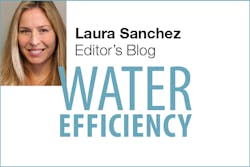The western US has received relatively little snowfall this winter. Because reduced snowpack levels mean less water for drinking, irrigating crops, and powering hydroelectric plants, for decades many states have invested in cloud seeding to boost water supplies. But only recently has a scientific study proven that the process actually works.
Cloud seeding involves the addition of silver iodide to alter microphysical processes within a cloud. The compound, which has a molecular structure similar to ice, facilitates ice particle nucleation by creating a solid substrate for the crystals to form around. The infusion process involves either flying through a cloud and launching flares that release silver iodide or using ground-based generators to burn a silver iodide solution that rises into the clouds.
Until recently, the hypothesis was only indirectly quantifiable by calculating the snowfall directly beneath seeded areas. However, University of Wyoming atmospheric scientist Jeffrey French and his colleagues were able to document the process recently and confirm that silver iodide supports snow formation. They flew through a seeded cloud and, using sensors, lidar, radar, and laser technology, captured data about the particles in both the seeded and unseeded areas. The team’s study is published in Proceedings of the National Academy of Sciences.
“Under certain conditions, we have demonstrated unambiguously that the chain of events that are hypothesized to occur when you add silver iodide to a cloud do indeed occur,” French told WIRED. “We can quantify how many particles were being produced, how fast those particles grew, etc.,” he added.
The team worked with Idaho Power Company, a utility that operates 17 hydroelectric projects, to quantify the results of cloud seeding. The utility reports that its program, consisting of 55 ground-based generators and three planes, has produced an annual increase in snowpack of 12% in one of its regions and 5% in others since it began seeding clouds in 2005.
What are your thoughts on cloud seeding? Since this weather modification process prompts the release of cloud moisture in one targeted area, it seems that it could potentially deprive other regions of precipitation. What are your impressions?
